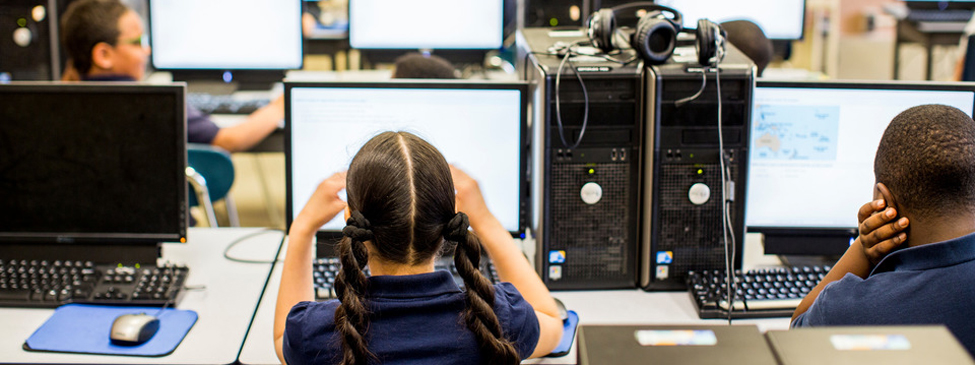This month, we launched Room to Run, a new multimedia feature that asks what’s possible when students have access to the rich, challenging content they deserve—and answers that question in students’ own words. Here, teacher Caitlin Meehan-Draper describes what challenging content looks like—and why it matters—in her eighth grade English language arts classroom.
One day in the spring of 2015, I reached a point of frustration all teachers probably empathize with: That feeling when you want to cry-yell at a student, “Don’t you know how important it is for you to be a better reader?” It felt terrible and helpless, and deep down I knew it was my fault that my student Taylor was not engaged during my reading intervention block.
I teach eighth grade English. Last year, for interventions with students more than two years below grade level, we spent 50 minutes every morning reading texts at or slightly above their reading level and tackling questions that can only be answered through the text. For Taylor, this meant reading stories about a man climbing a mountain, or a nonfiction text about the butterfly life cycle.
Once in a while we’d get something interesting, like a synopsis of a historical event. But by and large, the texts were simple and uninteresting. It’s no surprise how she felt: uninterested.
The following summer I participated in TNTP’s Good to Great teaching institute, during which I was introduced to expert packs: a scaffolded series of texts, media, webpages and other forms of content meant to give kids a well-rounded understanding of one topic. The idea is, kids move through the packs independently, log new insights and thoughts in a journal, and, at the completion of it, undertake an independent project—like a speech, poem, or essay.
With the help of coaches at the institute, I implemented this strategy in all of my intervention blocks this past school year with the goal of broadening my students’ knowledge on real world topics that engaged them with independent work they could do own at their own pace, while improving their reading skills.
While reading and analyzing historical texts, infographics, magazine articles, and films, my students gained a nuanced understanding of historical periods like the Civil Rights movement or specific issues like the role of water in different countries. They loved the independence of not having me standing over their shoulder as they worked through the content, and I was thrilled—and pleasantly surprised—to see that they did not in fact need my help to organize their thoughts. As the year progressed, this independent strategy led them to analyze texts on their own, annotate without guidance, and create detailed summaries without me having to pull out key details for them.
When I asked my students—many of whom reached grade level by May—to describe the change in approach in their own words, they highlighted the freedom to move independently through engaging content. “No one can help you. You have to push yourself to figure it out,” said one student. “I like learning by myself without help. It makes me a better student,” said another.
Beyond students being excited about their freedom, an important benefit to my new approach to content was that it removed my anxiety as to whether or not I was moving at the right pace in class. In the past when my class moved through a text together, I constantly grappled with two interwoven issues: Students on grade level felt held back if we went too slow, and students behind grade level felt discouraged if we went too fast. But with an independent learning framework that encourages academic ownership, my students control their pace without interference from me or their peers.
This empowered students who are ahead of the curve, as well as those who need more time to process content—like one student who tended to struggle during group readings. “I like that I can go back and read the story over and over,” he said.
When kids have power over their learning, no matter where they start, they thrive. Expert packs are just one way to achieve this, but there are other ways, too. And as the school years gets closer, it’s important that ELA teachers like me continue to look for new ways to make reading accessible, fun, and engaging for students.
The truth is, the traditional methods we know are not cut out for a new generation of kids who are interested in discovering on their own and have all sorts of technology and content at their fingertips. If we truly want to reach them, we have to make sure that what we put in front of them is interesting, challenging, and creative enough to hold their attention.



